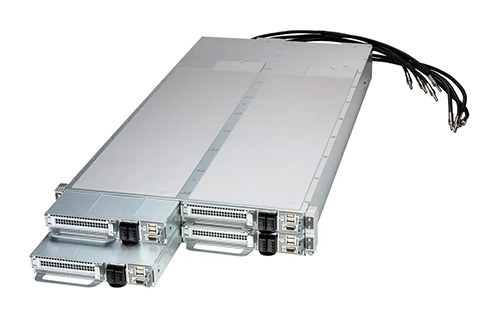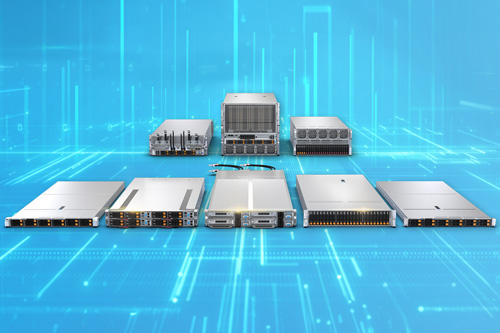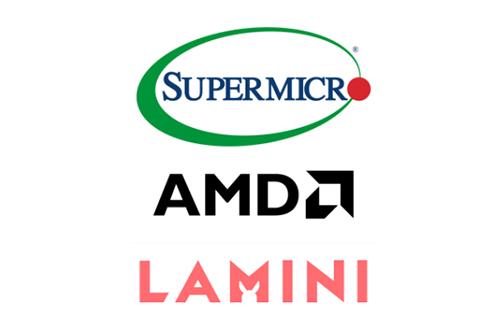You’ve no doubt heard of PCIe 5.0. But what is it exactly? And why does it matter?
As the name and number imply, PCIe 5.0 is the fifth generation of the Peripheral Component Interconnect Express interface standard. PCIe essentially sets the rules for connecting high-speed components such as GPUs, networking cards and storage devices to servers, desktop PCs and other devices.
To be sure, these components could be connected via a number of other interface standards, such as USB-C and SATA.
But PCIe 5.0 alone offers extremely high bandwidth and low latency. That makes it a better choice for mission-critical enterprise IT operations and resource-intensive AI workloads.
Left in the Dust
The 5th generation of PCIe was released in May 2019, bringing significant improvements over PCIe 4.0. These include:
- Increased Bandwidth. PCIe 5.0 has a maximum throughput of 32 giga-transfers per second (GT/s)—effectively double the bandwidth of its predecessor. In terms of data transfer, 32 GT/s translates to around 4 GB of data throughput per lane in each direction. That allows for a total of 64 GB/s in a 16-lane PCIe-based GPU. That’s perfect for modern GPU-dependent workflows such as AI-inferencing.
- Lower Latency. Keeping latency as low as possible is crucial for applications like gaming, high-performance computing (HPC) and AI workloads. High latency can inhibit data retrieval and processing, which in turn hurts both application performance and the user experience. The latency of PCIe 5.0 varies depending on multiple factors, including network connectivity, attached devices and workloads. But it’s safe to assume an average latency of around 100 nanoseconds (ns) — roughly 50% less than PCIe 4.0. And again, with latency, lower is better.
- Enhanced Data-Center Features. Modern data-center operations are among the most demanding. That’s especially true for IT operations focused on GenAI, machine learning and telecom. So it’s no surprise that PCIe 5.0 includes several features focused on enhanced operations for data centers. Among the most notable is increased bandwidth and faster data access for NVMe storage devices. PCIe 5.0 also includes features that enhance power management and efficiency.
Leveraging PCIe 5
AMD is a front-runner in the race to help enterprises cope with modern AI workloads. And the company has been quick to take advantage of PCIe 5.0’s performance improvements. Take, for example, the AMD Instinct MI325X Accelerator.
This system is a leading-edge accelerator module for generative AI, inference, training and HPC. Each discrete AMD Instinct MI325X offers a 16-lane PCIe Gen 5 host interface and seven AMD Infinity Fabric links for full connectivity between eight GPUs in a ring.
By leveraging a PCIe 5.0 connection, AMD’s accelerator can offer I/O-to-host-CPU and scale-out network bandwidths of 128 GB/sec.
AMD is also using PCIe on its server processors. The new 5th generation AMD EPYC server processors take advantage of PCIe 5.0’s impressive facility. Specifically, the AMD EPYC 9005 Series processors support 128 PCIe 5 I/O lanes in a single-socket server. For dual-socket servers, support increases to 160 lanes.
Supermicro is another powerful force in enterprise IT operations. The company’s behemoth H14 8-GPU system (model number AS-8126GS-TNMR2) leverages AMD EPYC processors and AMD Instinct accelerators to help enterprises deploy the largest AI and large language models (LLMs).
The H14’s standard configuration includes eight PCIe 5.0 x16 low-profile slots and two full-height slots. Users can also opt for a PCIe expansion kit, which adds two additional PCIe 5.0 slots. That brings the grand total to an impressive 12 PCIe 5.0 16-lane expansion slots.
PCIe 6.0 and Beyond
PCIe 5.0 is now entering its sixth year of service. That’s not a long time in the grand scheme of things. But the current version might feel ancient to IT staff who need to eke out every shred of bandwidth to support modern AI workloads.
Fortunately, a new PCIe generation is in the works. The PCIe 6.0 specification, currently undergoing testing and development, will offer still more performance gains over its predecessor.
PCI-SIG, an organization committed to developing and enhancing the PCI standard, says the 6.0 platform’s upgrades will include:
- A data rate of up to 64 GT/sec., double the current rate and providing a maximum bidirectional bandwidth of up to 256 GB/sec for x16 lanes
- Pulse Amplitude Modulation with 4 levels (PAM4)
- Lightweight Forward Error Correct (FEC) and Cyclic Redundancy Check (CRC) to mitigate the bit error rate increase associated with PAM4 signaling
- Backwards compatibility with all previous generations of PCIe technology
There’s even a next generation after that, PCIe 7.0. This version could be released as soon as 2027, according to the PCI-SIG. That kind of speed makes sense considering the feverish rate at which new technology is being developed to enable and expand AI operations.
It’s not yet clear how accurate those release dates are. But one thing’s for sure: You won’t have to wait long to find out.
Do More:
- Explore: 5th Gen AMD EPYC processors
- See the datasheet: Supermicro H14 8-GPU system
- Learn more about the PCIe 6.0 specification












